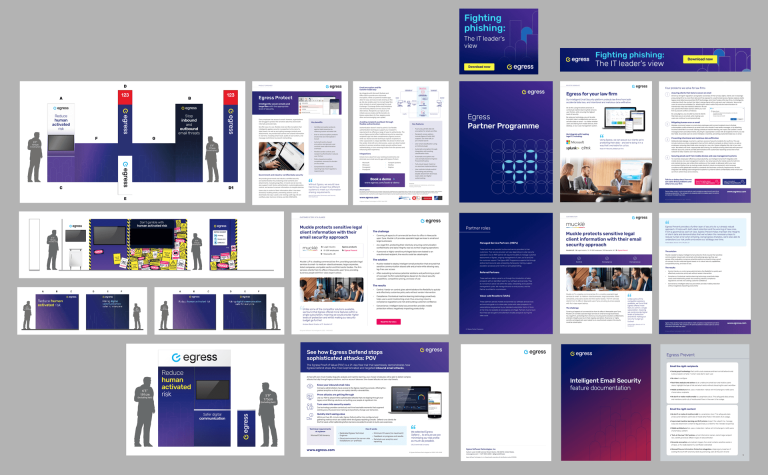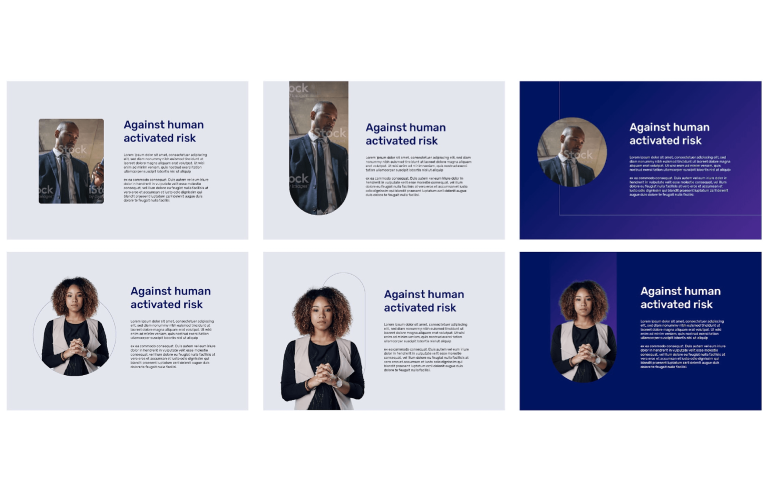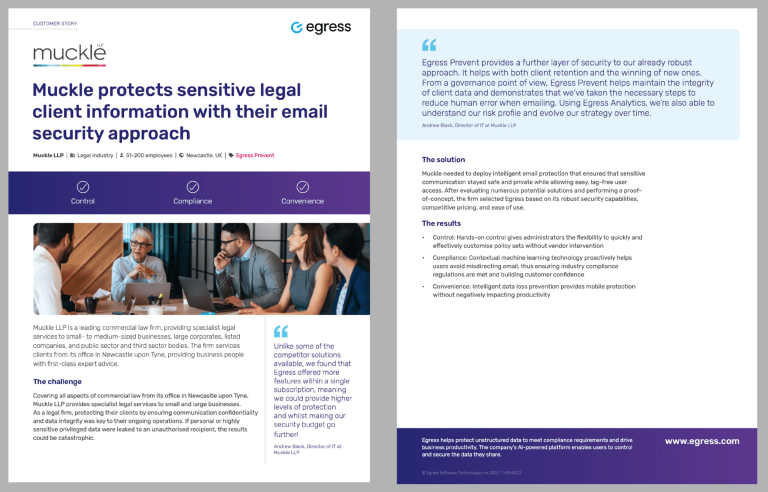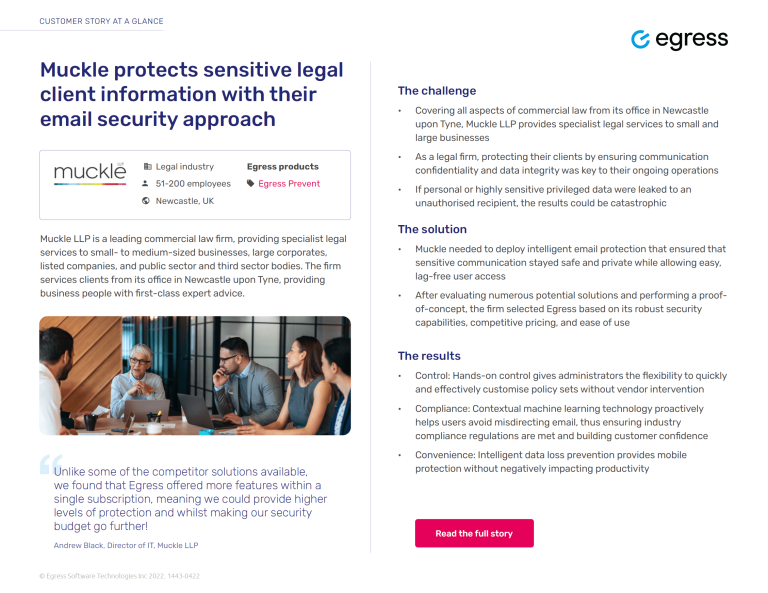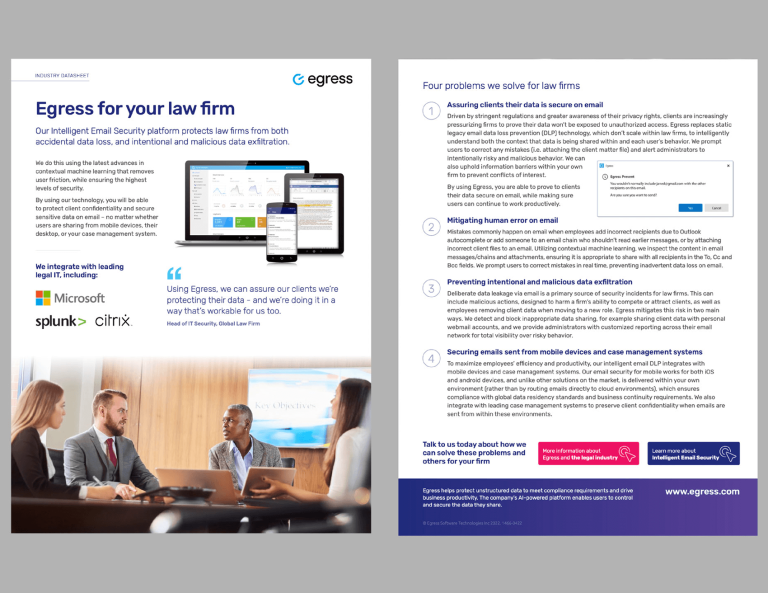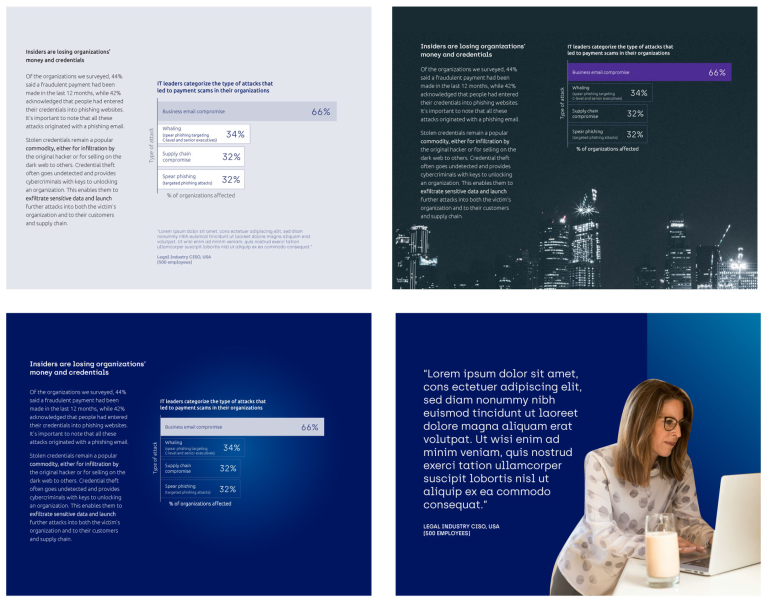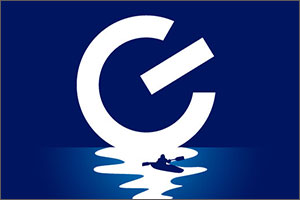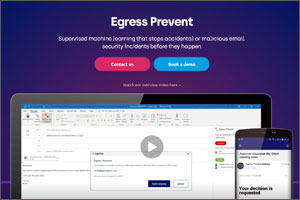Brand Design
Egress Brand Refresh
The Egress brand underwent another refresh at the beginning of 2022. This was in response to both new audience information and the general desire for a visual refresh. The brief was to make the brand feel 'sophisticated', however the brand was also to be seen as approachable. I updated the overall visual design, working with the Senior Marketing Team, defined and created the new guidelines. I also worked with my Design team and freelancers creating templates for this new brand.
Project goals:
1) To respond to data gathered from our audience regarding the way they consume media and their preferences
2) To build a more ‘sophisticated’ brand identity
From brief...
The initial stage of this refresh was to gather information about what was and was not working well in the current brand. In addition to considering the word ‘sophisticated’ and other internal requests, I used information about the audience and the preferred way they consumed media (not discussed here for privacy reasons).
Using this information I created three words which all future designs should be benchmarked against.
Sophisticated
Authentic
Expert

... to design
In order to meet the brief, use of colour was restricted, where CTAs would only utilise the wider colour palette. There was also an emphasis on white space, which was communicated to all designers working on the brand.
Visual interest could be added using patterns made from lines of a fine weight, which would not encroach on the effect of white space. A standard pattern – both linear and radial – was created for repeatable use. This update also included the increased use of gradients, as borrowed from the earlier product page designs.
Once the elements were together, work could be done on the updated brand guidelines.
The next steps
The design for the PowerPoint template was the first one to test the brand refresh on, before rolling the refresh out to other templates. This would allow me to go back and make any tweaks to the guidelines to make it usable.
There are two reasons for using the PowerPoint template as a base; firstly there are a lot of different requirements and use cases across the multiple slides, and secondly this template needs to be able to be used by non-designers – which means that it has to be flexible enough and still clearly communicate the brand.
Any tweaks to the brand guidelines were done at this stage before wider dissemination.
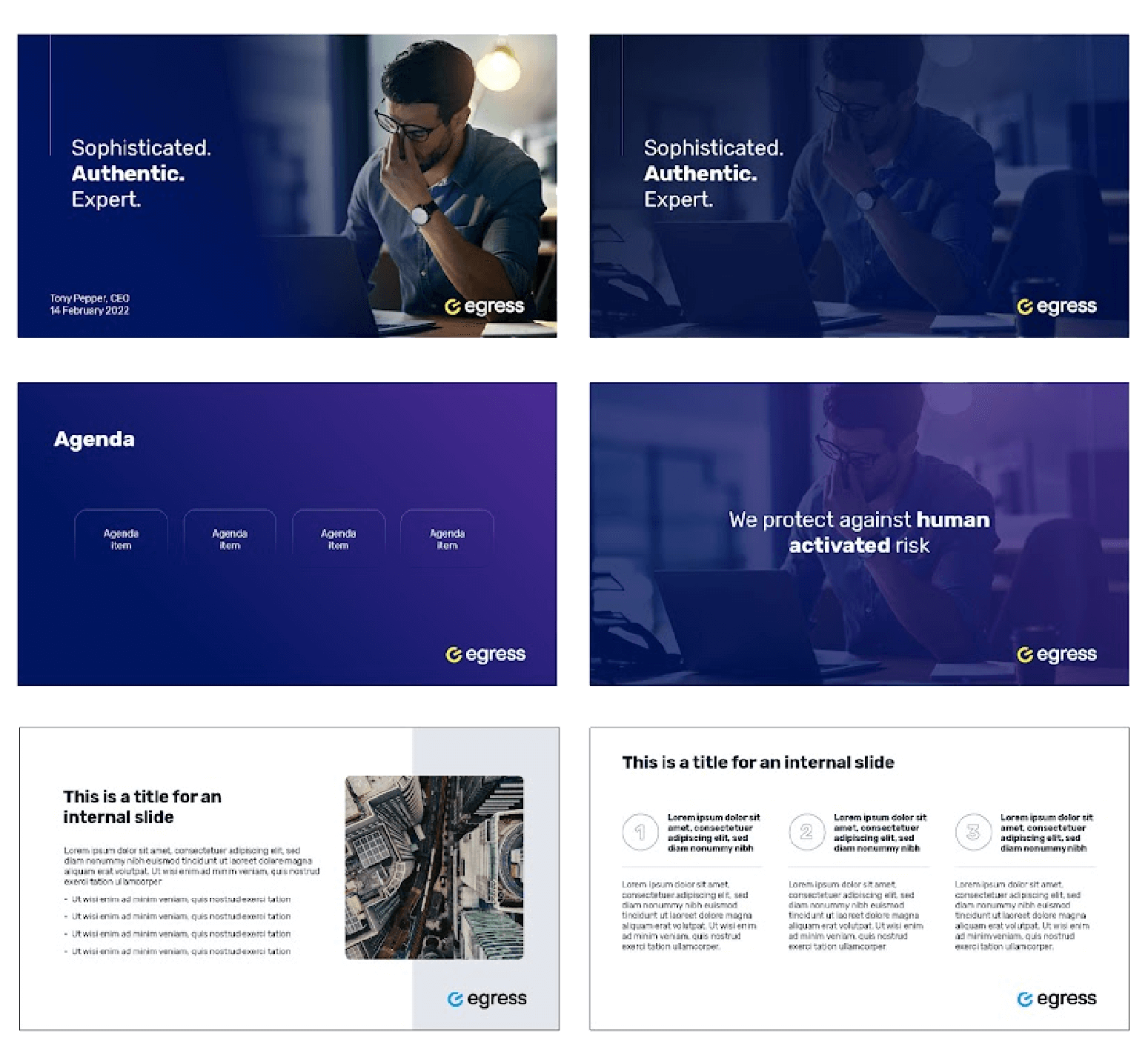
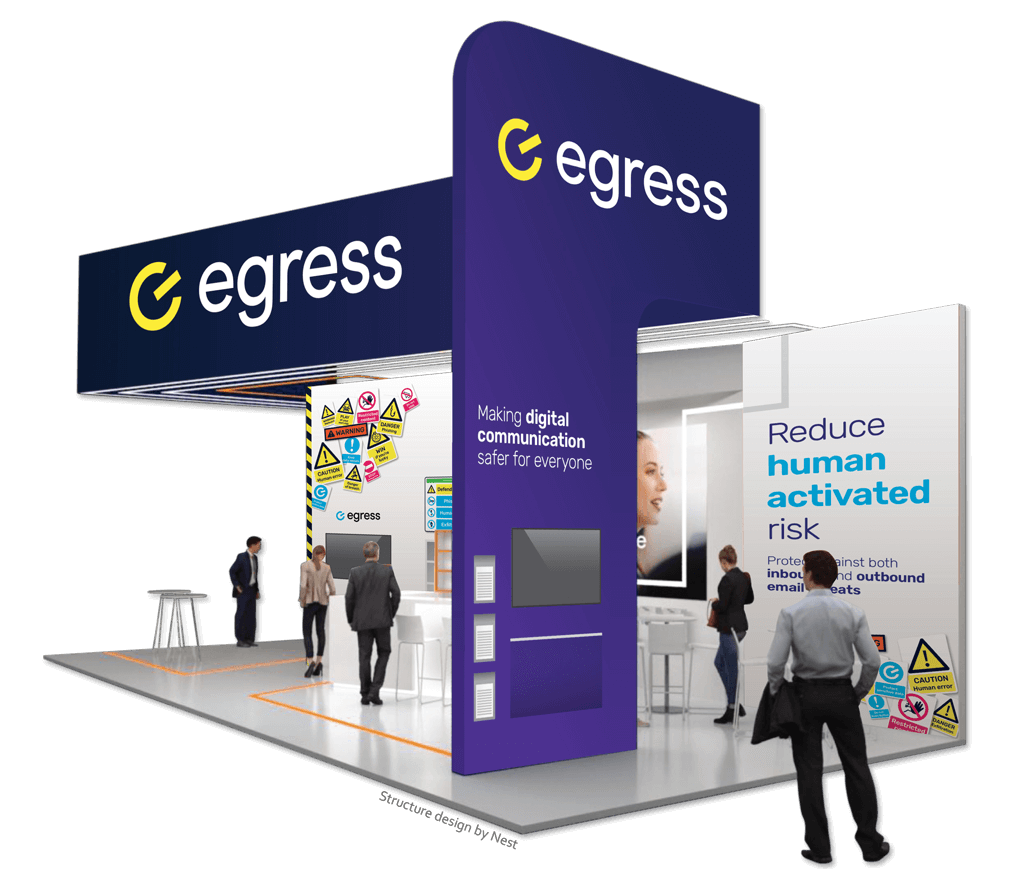
Rolling out the brand
Subsequent templates were created by myself and my team using the new brand guidelines. At this stage frequent communication is very important, as we are creating templates for use by anyone working with the brand in future. A large number of materials would also need to be converted to the new brand once the templates were ready. To keep track of everything I created a shared database in Monday.com, which also allowed me to assign priorities and responsibilities.
As a hands-on Creative Director I created other PowerPoint templates, print-format templates (e.g. case studies, datasheets, product documentation), digital banners (including social media) and other odd items which are necessary when doing a brand refresh. I also helped converting some materials into the new brand, and created stand designs for the upcoming trade shows.
Want to know more? Get in touch!
Related content
Creating an internal brand identity, which would sit comfortably alongside the external-facing brand, as well as producing materials for internal campaigns.
View project >
This successful campaign described how employees posed a security risk to businesses in three key ways- employee error, hacking and data exfiltration.
View project >
This was a self-initiated project designed to improve sales conversions on the website. The original page had key information hidden behind tabs, which made for a limited user experience.
View project >

